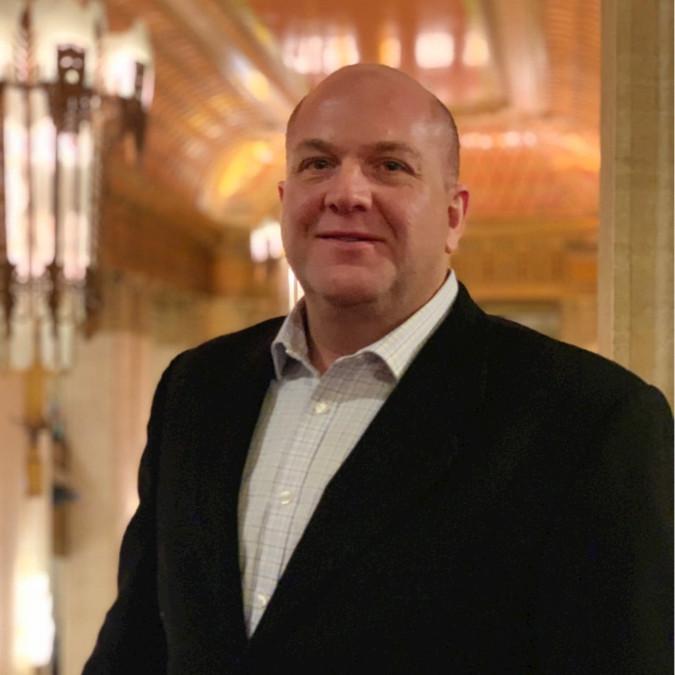
Transport infrastructure specialist Ferrovial is in the process of building up a global vertiport network to support the advanced air mobility segment. Joseph Alesia, senior vice president of corporate development for Ferrovial Airports, talks to Lindsay Bjerregaard about what these vertiports will look like and how maintenance operations will fit into the bigger picture.
What are Ferrovial’s near-term vertiport plans and what role is it taking when it comes to their operation and maintenance?
We have already publicly announced markets in Florida and Europe. We also have a partnership now with Vertical, which is going to be in the UK. Our current OEM partners are Lilium and Vertical, and as we progress there may be others. It’s not just the U.S. and Europe—it will be a global infrastructure network.
We are not only identifying, securing the leases, designing and developing the vertiports, but we’re also going to maintain them and operate as an airport operator would.
What will these vertiports consist of? What type of facilities, equipment and staff will they need?
The design and the structure are pretty straightforward, but what people often try to do is compare what we’re doing to an airport, FBO or heliport—but there are differences. When you go to an airport you need to get there an hour and a half before your flight, then you go shopping, eat and go do your thing. In a vertiport, one of the biggest purposes is convenience and time. You’ll get there, you’ll go in, you’ll have a couple minutes only, and then you’ll get on your flight and you’re up in air within 10 minutes, let’s say. So as far as amenities, it’s very limited because you’re not going to be hanging around there.
There are going to be many different players. In Palm Beach we have announced seven stands and one of those is an MRO bay—or stand as we call them. That MRO area will also be able to be used as a gate or a stand if needed, but its purpose is for the maintenance facilities or the OEMs.
As far as staff and other support groups, you’re going to have a large electrical infrastructure where you’re going to need specialists and not your standard electrician for all the components that are involved with the charging infrastructure. You have an AC to DC [power supply], so you have converters, inverters, really high voltage systems and switch gears, so that’s not something your standard electrician is going to be able to maintain and service. There will be specialty groups there.
On ground operations, if we’re not limited to one OEM you’re going to have different support equipment. If there will be different eVTOLs or VTOLs coming in, we’re going to need different types of support equipment for each one of those, and those operations will done by Ferrovial at the vertiport.
What will a typical aircraft turnaround look like for an eVTOL at a vertiport? Aside from battery charging, will there need to be other ground support or maintenance considerations between flights?
That remains to be seen. During the certification of the aircraft, you’re going to have maintenance requirements or logbooks, or checks, pre-checks and post-flight inspections. I would imagine, as I’m a pilot myself, the time to do a walk-around for a general aviation aircraft is sub-10 minutes. I think it would be even quicker in a VTOL because there are fewer moving parts and fewer things to check. I think the computer diagnostics and the computer systems that are developed for these aircraft will tell you what’s wrong with it rather than you trying to find it.
If you look at the turnaround time with charging and inspections, I think it will be around 30 minutes on the high end.
How will aircraft maintenance differ for eVTOLs compared to traditional aircraft?
The FAA is the FAA, which is good. Safety is always going to be priority for any aircraft or helicopter, so there’s always going to be some maintenance. But when you have so many fewer moving parts, your maintenance is going to be limited. You don’t have fluids, per se, in certain eVTOLs. You have more electrical systems. You have actuators, which are not hydraulic—they’re all electrical battery. So that’s one portion of it.
The other one will be the sub-diagnostics where it’ll tell you what’s wrong. With that being said, I would assume that the amount of maintenance will be very limited. Additionally, with an aircraft you have the heavies, the C checks. With general aviation you have the 50-hr., 100-hr., the annuals. Those take a day or two because you’re taking panels apart and looking at all those moving surfaces, rods and cables associated, but you’re not going to have that with the eVTOLs.
Will the traditional model for how many maintenance technicians need to be on-site differ for vertiports?
I think that depends on the number of carriers or OEMs at each location. If we have a very small location, are the operators going to do this in-house or are they going to hire some of these subcontractors that airlines like Spirit or Frontier do, or even your larger airlines at smaller locations? It’s not a cost-benefit for them to have their own employees so they subcontract that out. Ground handlers is another good example of that. I would foresee that there will be a similar model for the vertiport where you have a technician who would service not only one aircraft but many different aircraft at that location.
As far as specifics, if the airlines and smaller stations have an aircraft on the ground, they’ll fly in a specific team, depending on what’s wrong with it. If it’s damaged, for example, you’ll need a specialist. You’re dealing with composites and carbon fibers—it’s not sheet metal and rivets where your standard technician can handle it. I think it will be a hybrid model.

